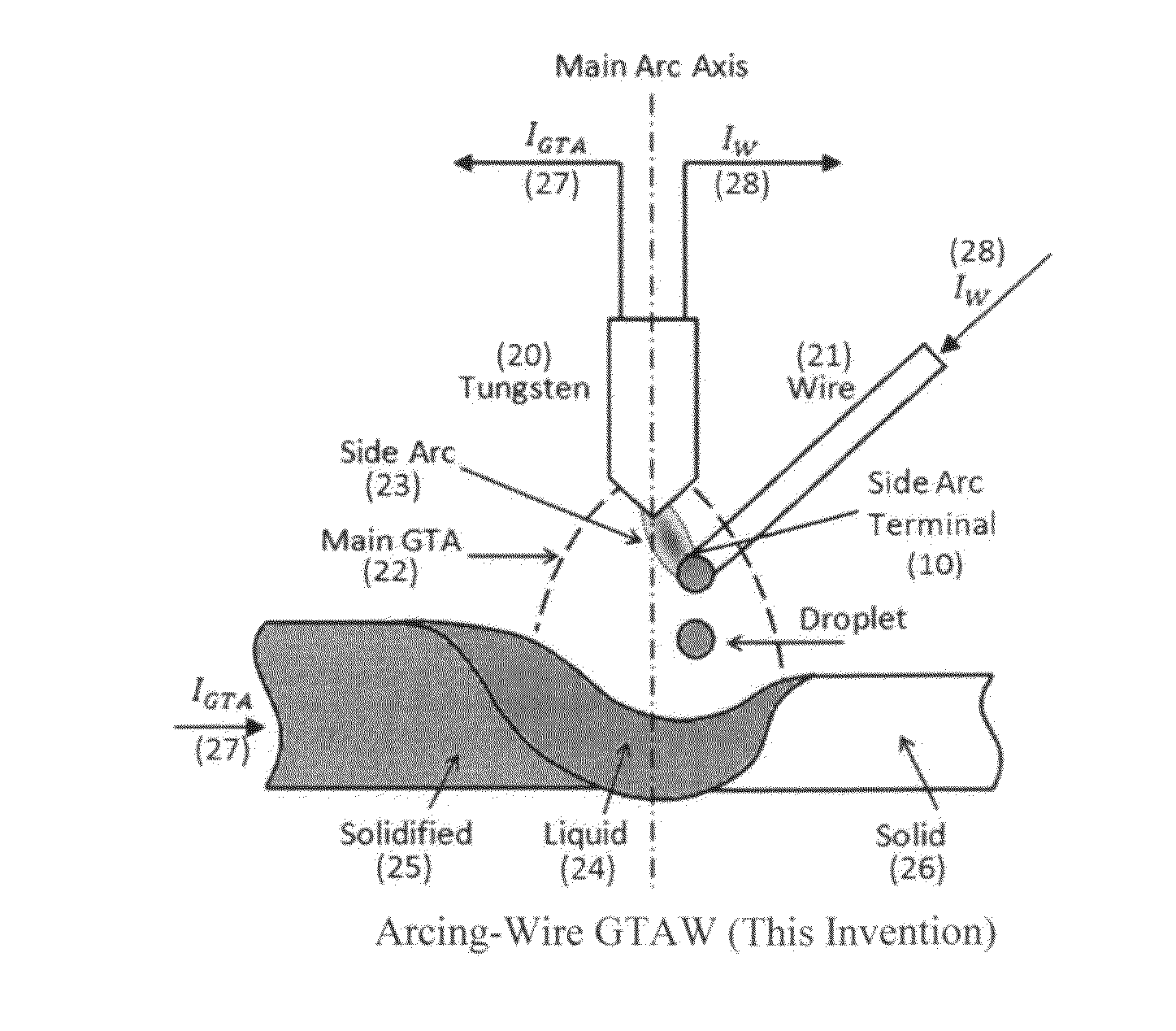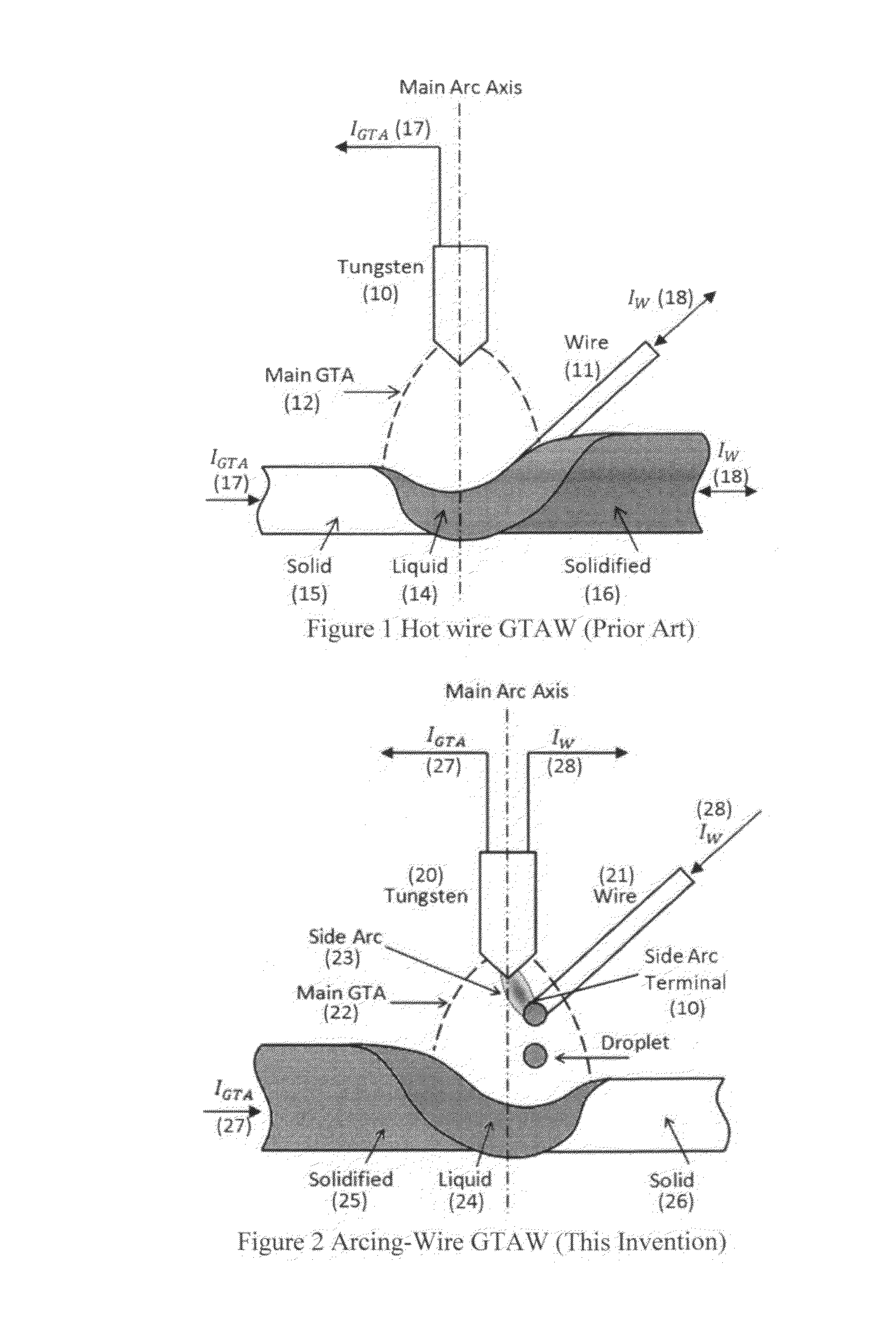Gas tungsten arc welding using arcing-wire
a technology of arc welding and tungsten arc, which is applied in the field of arc welding, can solve the problems of increasing the melting or deposition rate of hot wire, and increasing the melting or deposition rate at the expense of an increased weld pool
- Summary
- Abstract
- Description
- Claims
- Application Information
AI Technical Summary
Benefits of technology
Problems solved by technology
Method used
Image
Examples
Embodiment Construction
[0015]FIG. 3 illustrates the block diagram of a typical hot wire GTAW system. As shown in FIG. 3, a hot wire loop commonly includes a wire feeder 309, a wire heating power supply 308 (typically an alternating-current (AC)), a contact tube 306 and a ceramic isolation guide 312. After the gas tungsten arc (GTA) 302 is established, the wire 304 is fed into the weld pool on the work-piece 313. As a result, the hot wire current loop is closed and the current 311 flowing through the wire generates the resistance heat in the wire 304:
P=I22Rw (1)
Rw=ρl / (πr2) (2)
where:[0016]P is the power of the resistance heat;[0017]Iw is the current passing through the wire 304;[0018]Rw is the resistance of the wire extension 305;[0019]ρ is the electrical resistivity of the wire 304;[0020]l is the length of the wire extension 305;[0021]r is the radius of the wire 304.
[0022]It is clear that the wire diameter and the length of wire extension 305 decide the resistance and thus the resistance heat. By using...
PUM
| Property | Measurement | Unit |
|---|---|---|
| current | aaaaa | aaaaa |
| speed | aaaaa | aaaaa |
| diameter | aaaaa | aaaaa |
Abstract
Description
Claims
Application Information
 Login to View More
Login to View More - R&D
- Intellectual Property
- Life Sciences
- Materials
- Tech Scout
- Unparalleled Data Quality
- Higher Quality Content
- 60% Fewer Hallucinations
Browse by: Latest US Patents, China's latest patents, Technical Efficacy Thesaurus, Application Domain, Technology Topic, Popular Technical Reports.
© 2025 PatSnap. All rights reserved.Legal|Privacy policy|Modern Slavery Act Transparency Statement|Sitemap|About US| Contact US: help@patsnap.com



